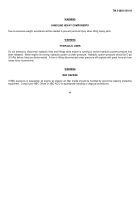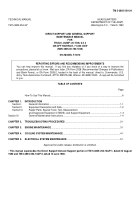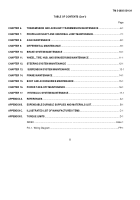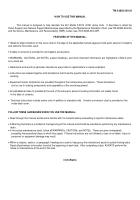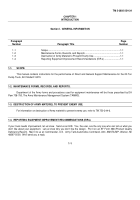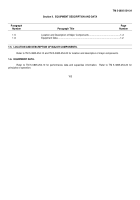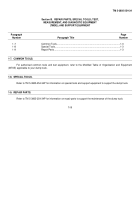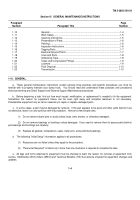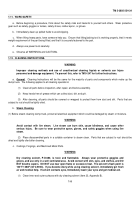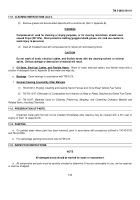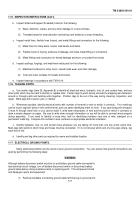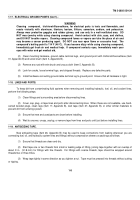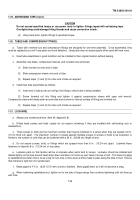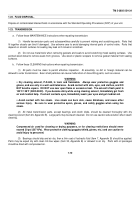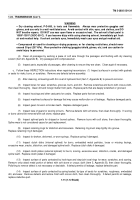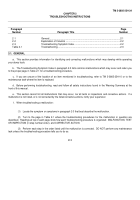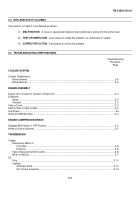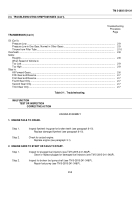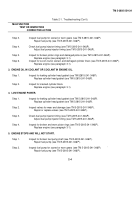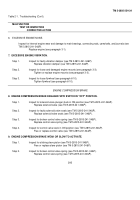TM-5-3805-254-34 - Page 15 of 727
TM 5-3805-254-34
1-15.
INSPECTION INSTRUCTIONS (Con’t).
b. Inspect drilled and tapped (threaded) holes for the following:
(1)
Wear, distortion, cracks, and any other damage in or around holes.
(2)
Threaded areas for wear distortion (stretching) and evidence of cross-threading.
c. Inspect metal lines, flexible lines (hoses), and metal fittings and connectors for the following:
(1)
Metal lines for sharp kinks, cracks, bad bends, and dents.
(2)
Flexible lines for fraying, evidence of leakage, and loose metal fittings or connectors.
(3)
Metal fittings and connectors for thread damage and worn or rounded hex heads.
d. Inspect castings, forgings, and machined metal parts for the following:
(1)
Machined surfaces for nicks, burrs, raised metal wear, and other damage.
(2)
Inner and outer surfaces for breaks and cracks.
e. Inspect bearings in accordance with TM 9-214.
1-16.
TAGGING PARTS.
a. Use marker tags (item 25, Appendix B) to identify all electrical wires, hydraulic, fuel, oil, and coolant lines, and any
other parts which may be hard to identify or replace later.
Fasten tags to parts during removal by wrapping wire fasteners
around or through parts and twisting ends together.
Position tags to be out of the way during cleaning, inspection, and
repair.
Mark tags with a pencil, pen, or marker.
b. Whenever possible, identify electrical wires with number of terminal or wire to which it connects.
If no markings
can be found, tag both wires or wire and terminal, and use same identifying mark for both.
If you cannot tag wire because
it must fit through small hole or you cannot reach it, write down description of wire and the point to which it connects or
draw a simple diagram on paper.
Be sure to write down enough information so you will be able to connect wires properly
during assembly.
If you need to identify a loose wire, look for identifying numbers near end of wire, stamped on a
permanent metal tag.
Compare this number to wire numbers on appropriate electrical schematic.
c. Identify hydraulic, fuel, oil, and coolant lines whenever you are taking off more than one line at the same time.
Mark tags with points to which lines and hoses must be connected.
If it is not obvious which end of a line goes where, tag
each end of line.
d. Identify and tag other parts as required by name and installed location.
1-17.
ELECTRICAL GROUND POINTS.
Many electrical problems are the result of poor ground connections.
You can ensure that ground connections are
good by performing the following steps:
WARNING
Although battery disconnect switch must be on and battery ground cable connected to
test electrical circuit voltage, turn off battery disconnect switch or disconnect battery
ground cable before doing resistance tests or replacing parts.
This will prevent shock
and damage to parts and equipment.
(1)
Remove hardware connecting ground cable terminal lug to ground point.
1-7
Back to Top

